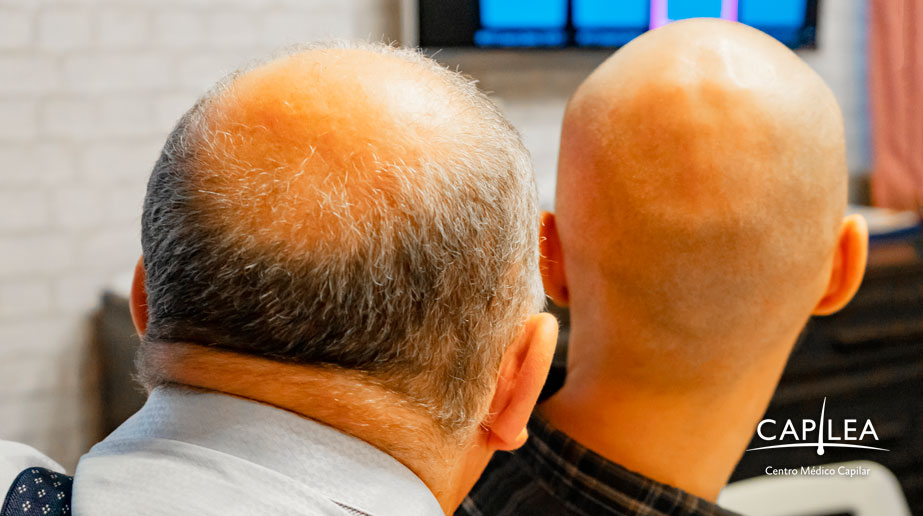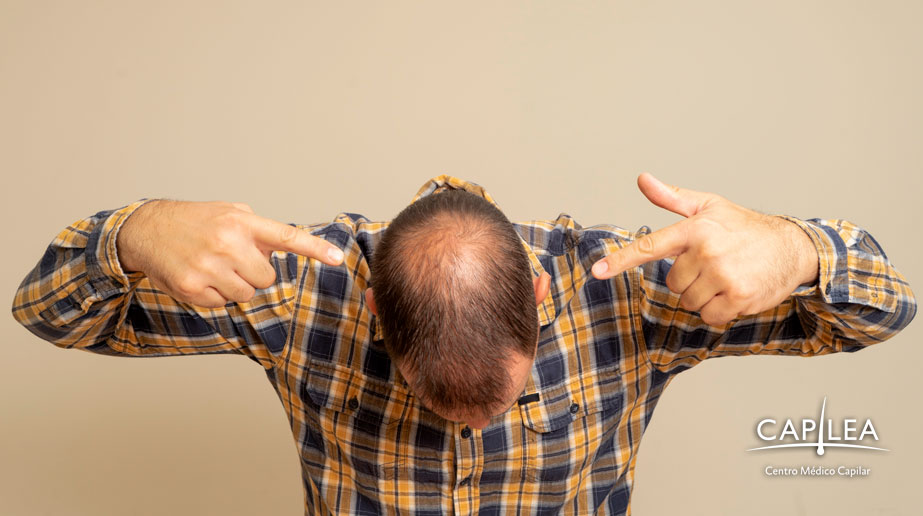Male pattern hair loss, or androgenetic alopecia, is one of men’s most common problems, but at what age does balding usually begin? Well, the answer is more complex. Regardless of how old you are, balding can be a discouraging and challenging experience, especially if you feel like you’re the only one going through it. In this blog, we’ll explore the question, “at what age do most men start balding?” and give you a clear idea of what to expect.

When do men start balding?
Hair loss starts when the hair follicles on the scalp begin to shrink. This affects the quality and growth of the hair. As a result, the hair eventually becomes thinner and falls out. Most people usually notice the first signs in their 30s, but the reality is that it can occur at any age and varies from person to person.
How do you know if you’re going bald?
There are several aspects to consider in determining if you have genetic baldness:
Look at your family history
If you have close relatives like your father, mother, or grandparents who have experienced significant hair loss, you may have a higher risk of developing hereditary baldness.
You start losing hair
In men, it often starts with a receding hairline and thinning hair at the crown of the scalp. Hair loss is usually more diffuse in women, but can still result in noticeable thinning.
You are middle aged
Baldness can start anytime after puberty, but most people notice significant signs until after their 30s or 40s.

Statistics about alopecia
Studies show that most men start experiencing androgenic alopecia (male pattern baldness) in their mid-twenties, with hair falling out at the temples and crown area. By the time men reach their thirties, the rate of hair shedding increases. Roughly 30% of men in their thirties show signs of baldness, increasing to 50% in their forties. After the forties, almost 8 in every 10 men continue to experience hair loss, and by the age of 80, 80% of men are bald or have significantly reduced hair. However, these statistics vary from person to person as different factors like hereditary, medical history, stress levels, and lifestyle choices impact hair loss.
Genetics play a significant role in balding, with baldness genes carrying over from generation to generation. Research shows that men with a family history of baldness are more likely to experience hair loss. If your father and grandfather suffered from hair loss at a young age, there’s a high chance that you may get it, too. Other factors, such as race and ethnicity, also play a role. Men of Caucasian backgrounds usually start experiencing hair thinning at a younger age, while men of African descent tend to experience hair loss later in life.

Habits to avoid
Apart from having a genetic disposition, certain practices can quickly exacerbate the condition, such as:
Sedentary lifestyle: Several studies indicate a lack of physical activity can accelerate androgenic alopecia.
Poor nutrition: A diet lacking essential nutrients can stop hair growth. Vitamins and minerals are vital for healthy hair growth.
Stress and mental health: Hair loss can be related to stress, anxiety, loneliness, and depression.
Poor hair care habits: Tight hairstyles and hot oil treatments can damage the hair and worsen baldness.
Hormonal changes: Changes in hormone levels that occur during pregnancy, menopause, or the use of contraceptives can influence hair loss.
Smoking: It negatively affects the health of your hair and contributes to its loss.

Stop hair loss with a hair transplant!
If you started noticing hair loss on your scalp, seeking treatment for this issue is essential. While the condition isn’t dangerous to your health, it can hurt your self-esteem and confidence.
The FUE technique can prevent further hair loss and stimulate hair growth. It involves transplanting healthy hair follicles from the patient’s donor area (typically the sides or back of the scalp) to the recipient area, where affected hair follicles are. After a few months, you will notice some hair regrowth! It is an outpatient procedure that lasts between 5-8 hours, depending on the degree of baldness, and it is entirely safe. You can achieve natural and lifelong results. Follow the doctor’s recommendations to maintain healthy hair.
Capilea has three clinics: Monterrey, Tijuana, and Mexico City. Schedule your free assessment consultation, either in-person or online, and regain your hair and confidence. We are here to help you enhance your appearance and self-assurance.

















